My fascination with Lithops a.k.a “living stones” began during the long circuit breaker period in Singapore and (I started weighing more than our refrigerator) succulents are taking over our social media feeds once again. While I thought succulents are always a pretty sight to have indoors, I never really was into collecting these lovely plants because of the attention needed to devote to their care. Plus, I can’t be the reason they’d eventually die 🙂
But hey, the long stay at home period afforded me so much time to finally give the idea a whirl. The very first succulents I collected were the Anacampseros “Sunrise” Rufescens that are too gorgeous to ignore. I was looking into collecting the rare ones and that’s when I stumbled unto Lithops. Ahh Lithops…too cute for words, it makes me cry. Tiny living stones yet they make great statement pieces when grouped together. I have bought my Lithops from different local growers and collectors in Singapore (adults, babies and seeds). I am also planning to buy directly from Africa and Korea once the dust settles.
Before I share with you my experiences of growing Lithops from seeds and its results, let me first share what I understand so far based on my readings online and what has worked for my collection.
My Tiny Lithops Wonderland (all photos are mine)
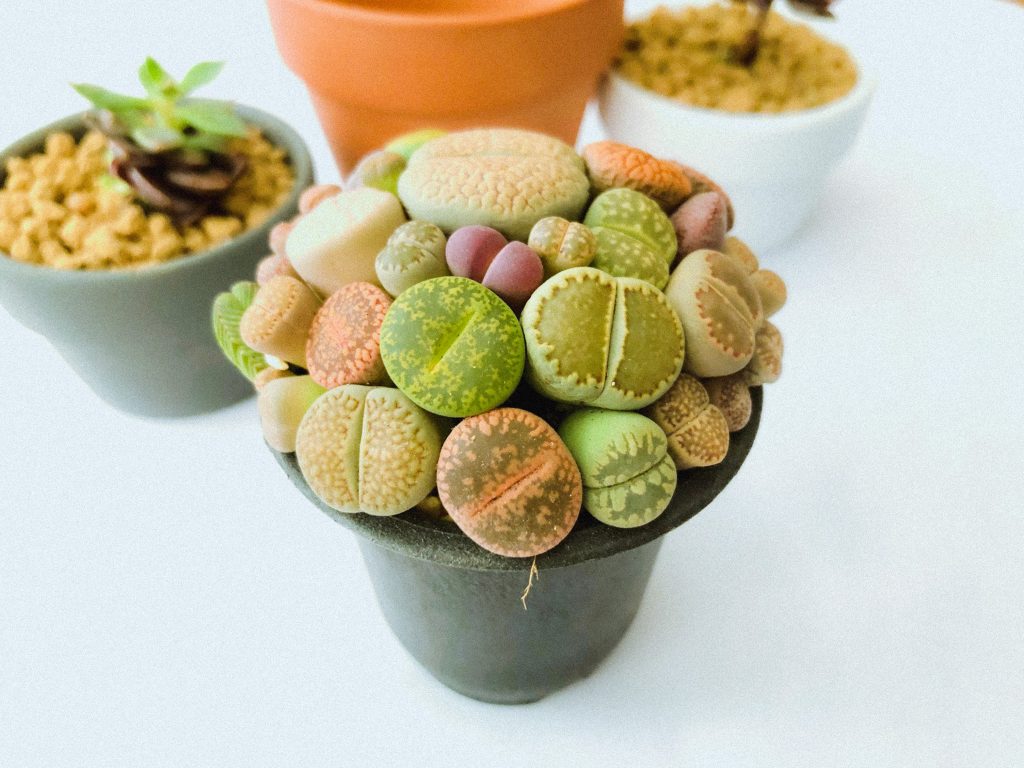
Lithops are succulents native to Southern Africa. The scientific name Lithops is both singular and plural. It stems from lithos (rock) and opsis (similar to).
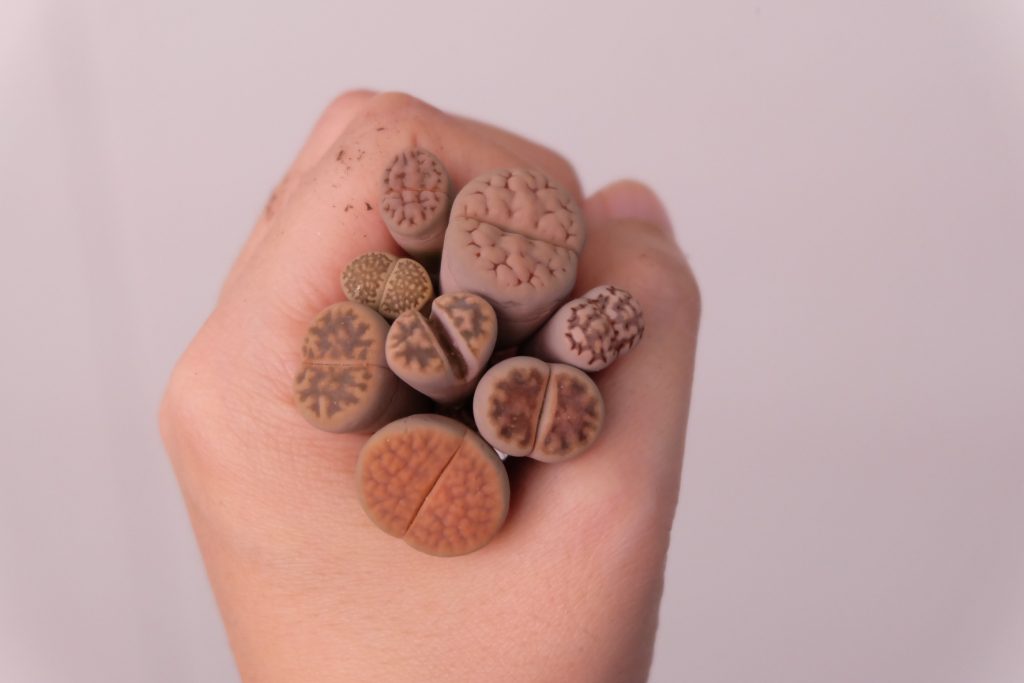
They are usually found in the driest regions with little to no rain. They have adapted to these environments so well that their ability to conserve water through their leaves is superb. The entire plant is devoted to this function.
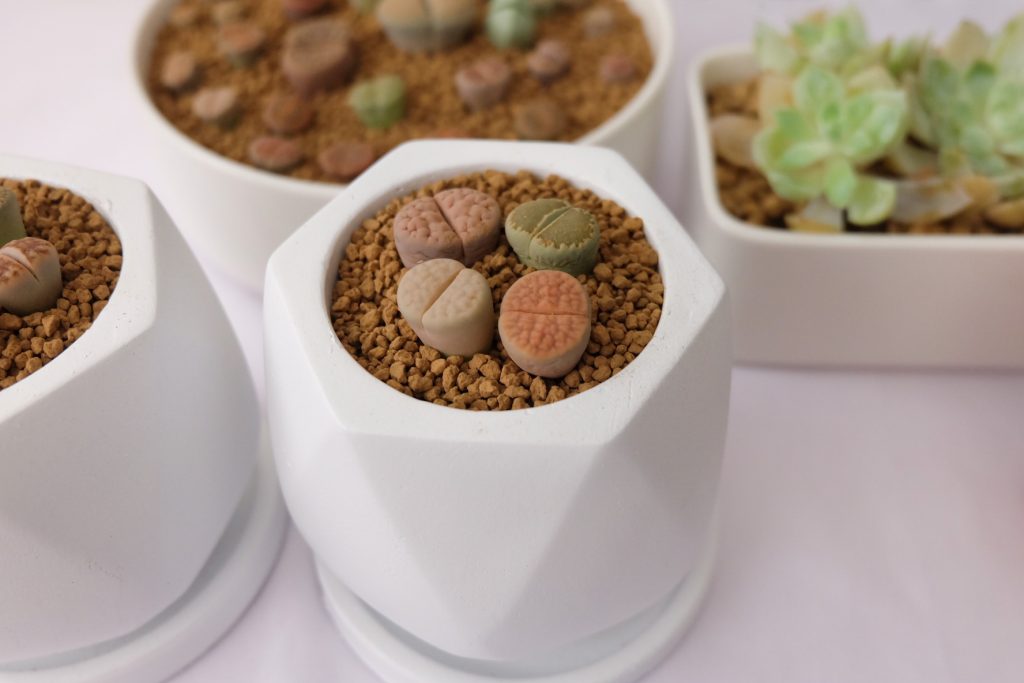
In their natural habitat, only the very top part of Lithops is visible above the ground and gets sunlight. The flat, top surface have cells that act as windows to allow light to penetrate deep into the plant and reach more chlorophyll.
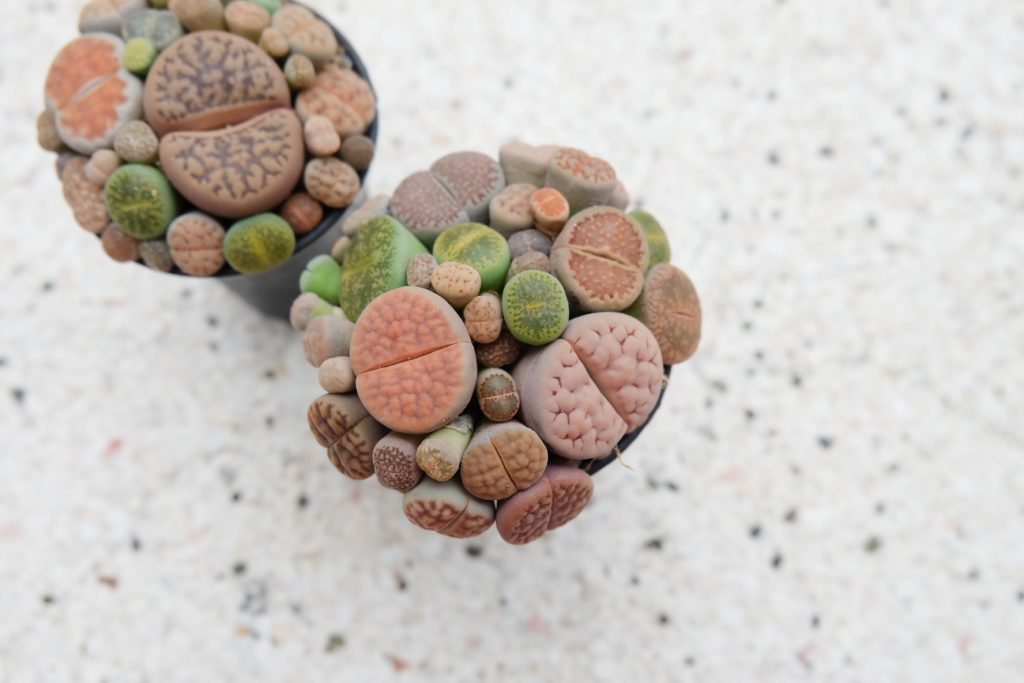
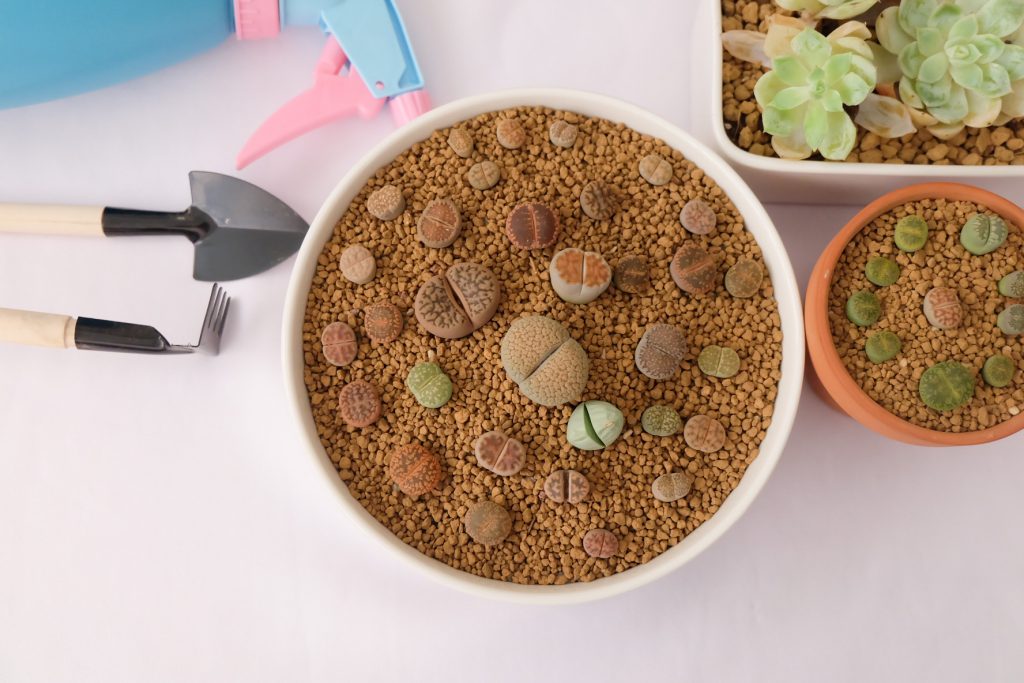
A Lithops has no stem. It looks like a division of two leaves and that’s very much what it is. Although, there are mutations of Lithops splitting into 3 leaves too. I have yet to encounter a tri-leaf Lithops.
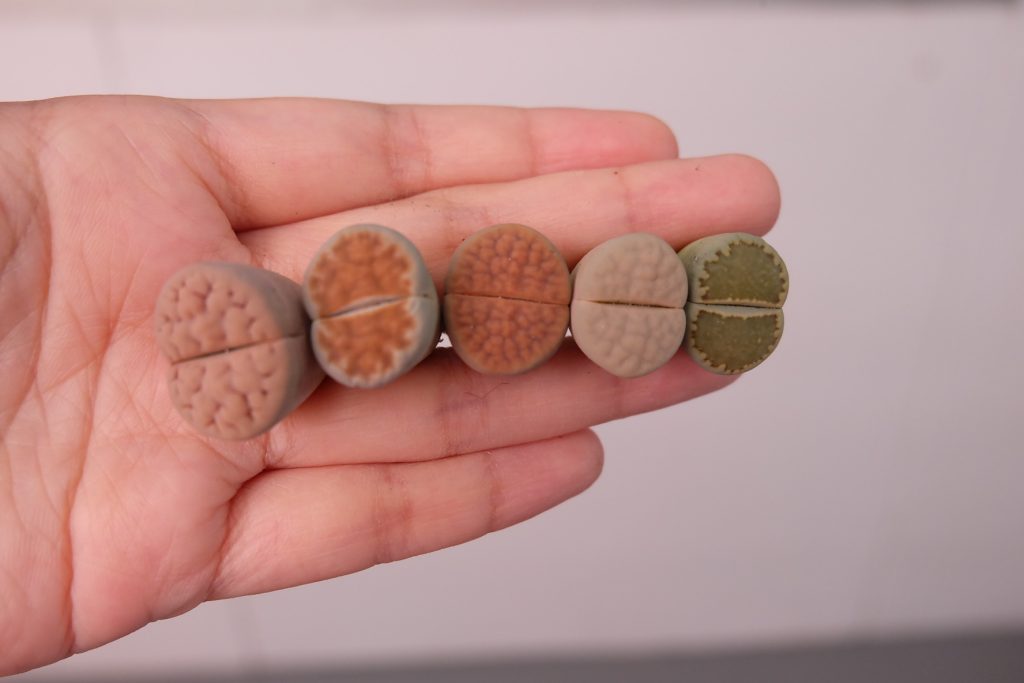
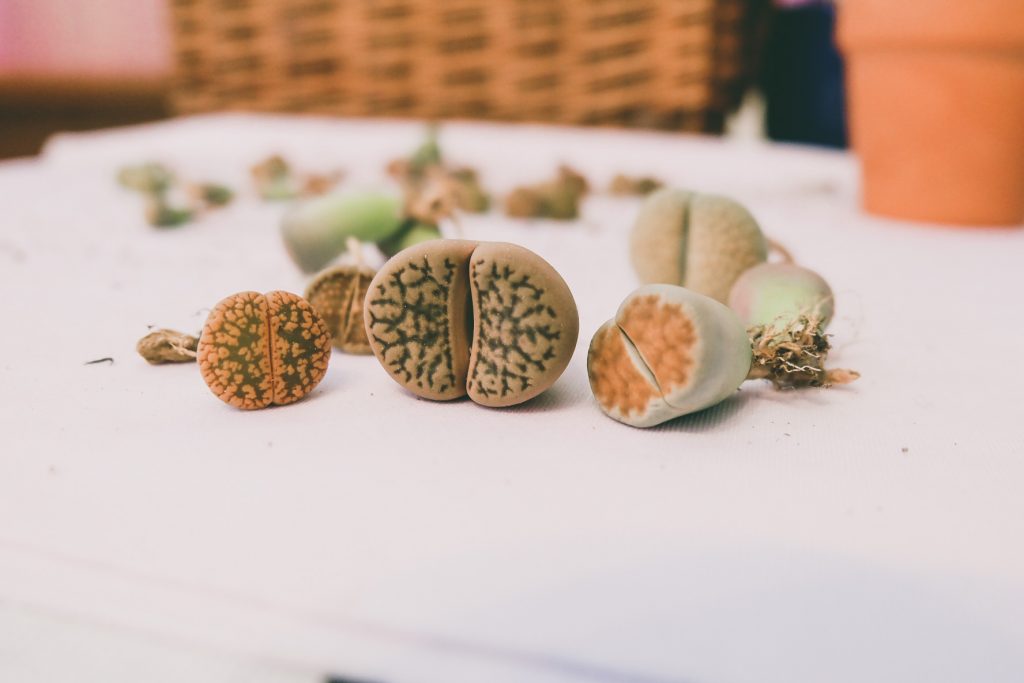
From what I read, Lithops’ roots can grow as long as 6-7 inches hence it’s important to consider a pot deep enough to accommodate maturing Lithops. I use ceramic or terracotta pots as they are more breathable allowing more air and moisture from the sides. Also, when you’re buying Lithops, do check on the root system first to avoid the risk of rot which could’ve started earlier before it was under your care. I have had Lithops that looked plump upon arrival and then died few days after repotting. I always buy from collectors because I can always ask questions about the conditions the Lithops were grown in before getting them.
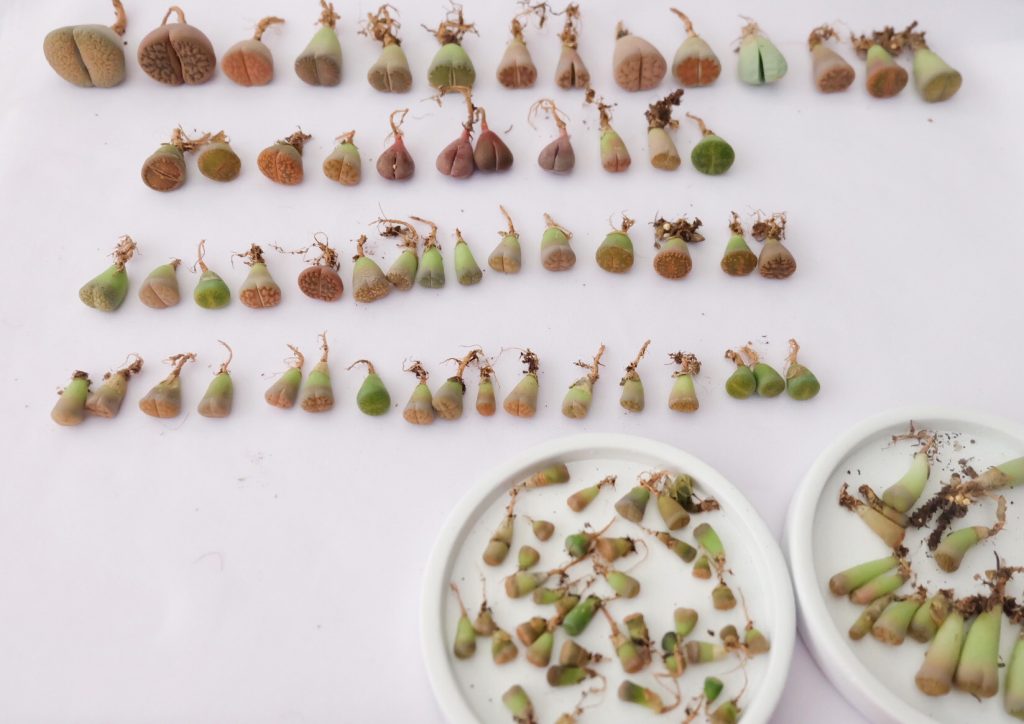
Most Lithops would produce flowers when winter approaches or during autumn season. From where I live (Singapore & Philippines), we don’t experience 4 seasonal cycles and this is why I specifically mentioned SG, PH on my title because it’s important to understand or read about Lithops distinct annual cycles of growth. Your location, your seasons, the amount of sunlight your (indoor) garden gets, and other more factors like soil mix available in your area need to be taken into account carefully.
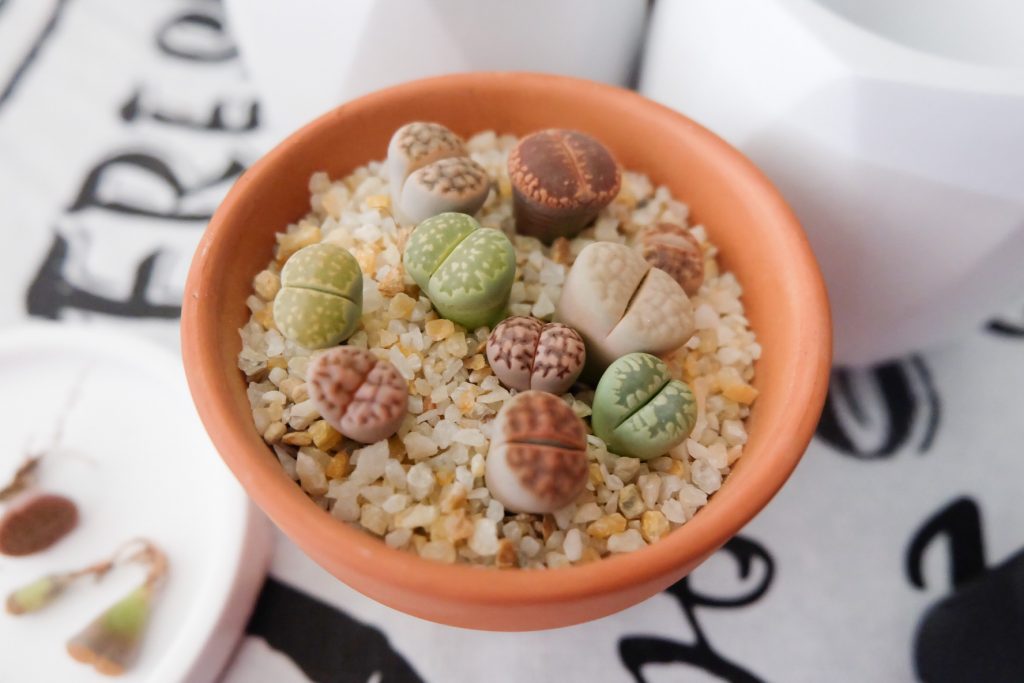
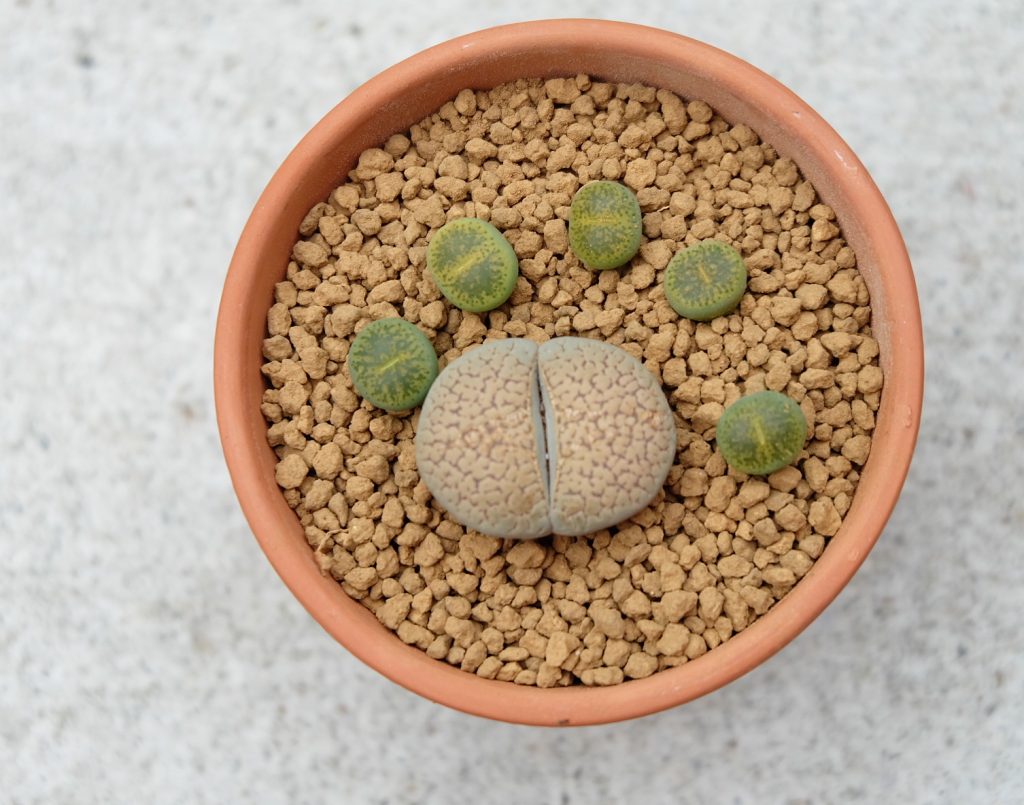
Having said that, Lithops are still relatively easy to take care for. For instance, while full sunshine is preferred, they can still be grown on a windowsill with decent amount of direct to partial sunlight. As for my watering schedule, my general routine is: once every two weeks. However, if I see a Lithops wrinkling at the sides and looking like pizza crust on top, I take that as a sign that they are thirsty.
As of this writing, there are 37 known species of Lithops around the world with at least 145 varieties. The common ones and sometimes on the cheaper range are: Lithops dorotheae, lesliei, karasmontana, hookeri, localis, viridis and bromfieldii
That sounded like cast of spells 😀
Alrighty, let’s move unto the next part of this post where I share my experiences growing lithops from seeds.
DUST-LIKE SEEDS
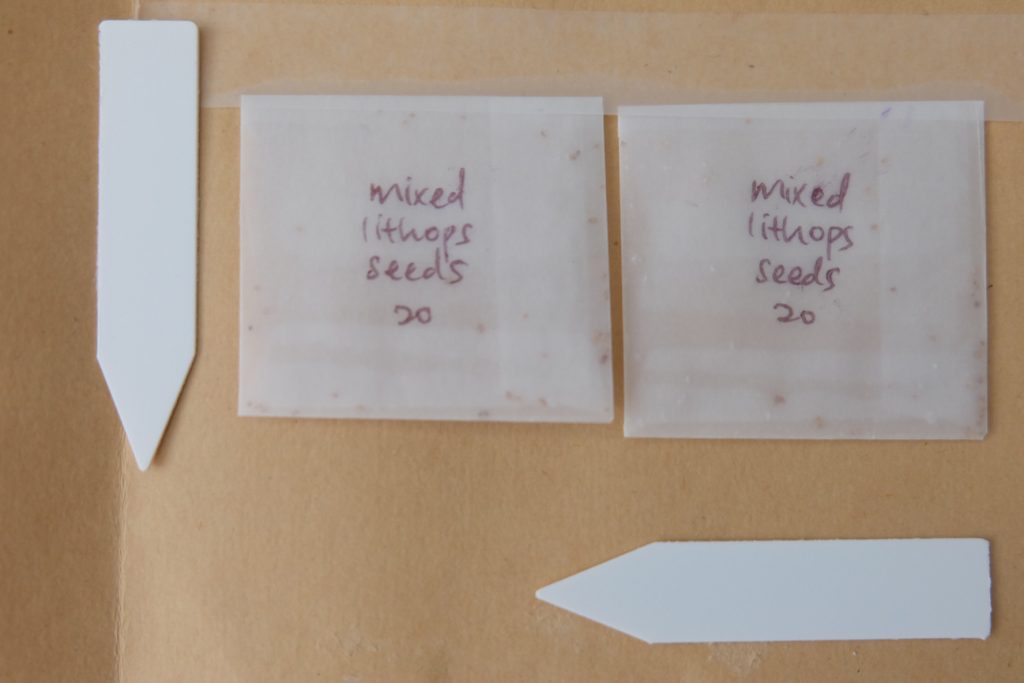
It almost look like receiving dusts or ants. I got these seeds from a hobbyist who sent me proofs of seed viability, germination and growth.
MY SOIL MIX, SUBSTRATES
For my mature Lithops collections, I go super extra to ensure that they dry out fast i.e. less than 24 hours. Remember that in their natural habitat, the soil rarely holds on to water (mostly sandy and gritty materials). If there is a consensus on soil mix, pumice is a popular choice and a bit of gritty mix. Each grower has a different take on the growing media but so far my soil mixture (below) works for my collections.
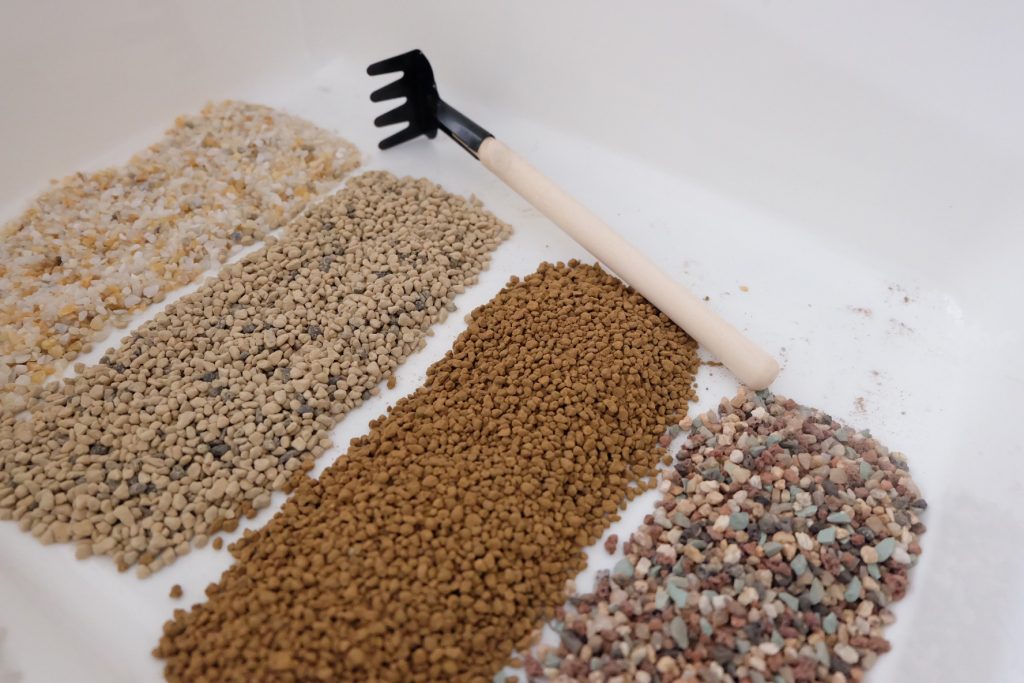
My soil medium is composed of the Fantastic Four (l-r): River Sand, Pumice, Akadama, Colorful stones of mixed substrate
For the top dressing, it can be any of the Fantastic Four but most of the time, I go for Akadama.
As for the Lithops seeds, I use the same 4 combination as per the picture however for the topmost layer, I use a regular potting mix. This is to avoid the seeds to fall through the cracks of Akadama, pumice etc. or else it’ll be game over for the seedlings.
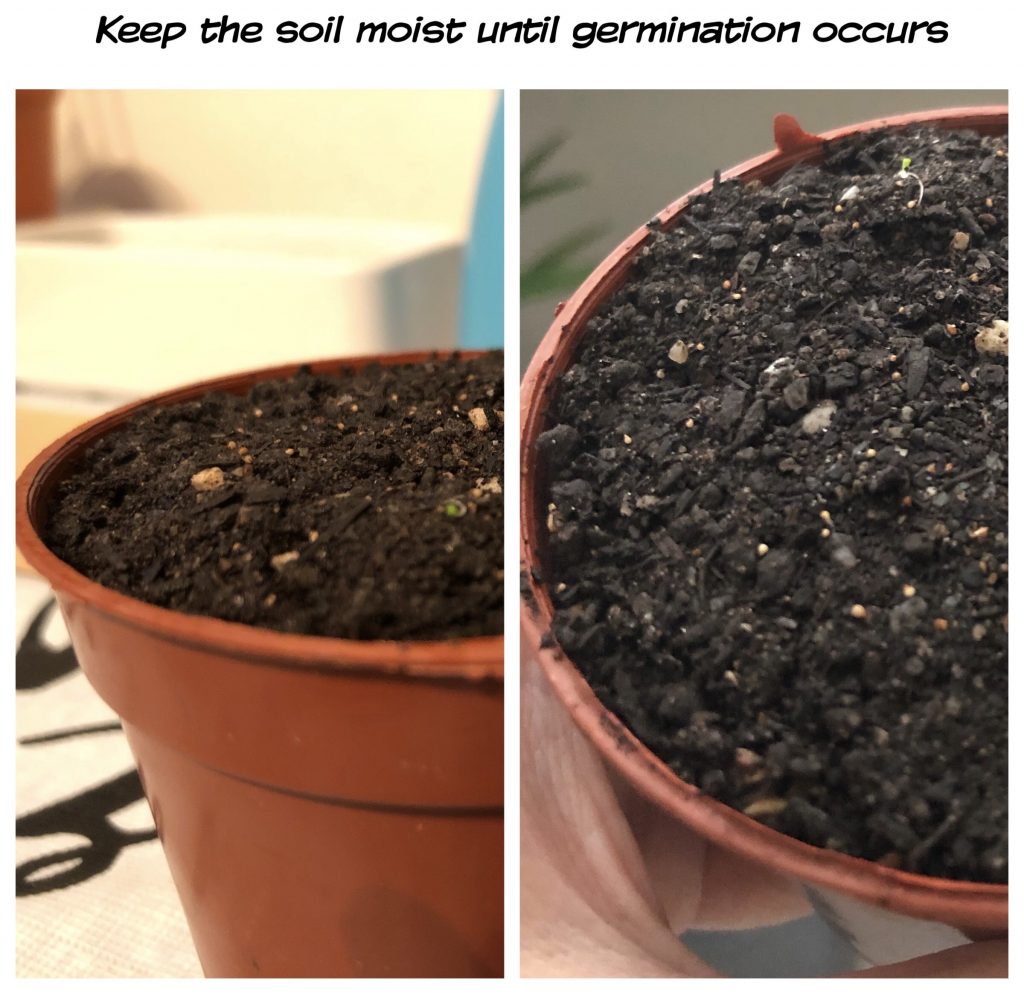
The soil should be kept moist until you can see some seeds sprouting, and then I gradually reduce the misting. I use spray bottle to mist the soil on a daily basis, usually in the morning. Again, this is because I live in a country with hot/ humid climate.
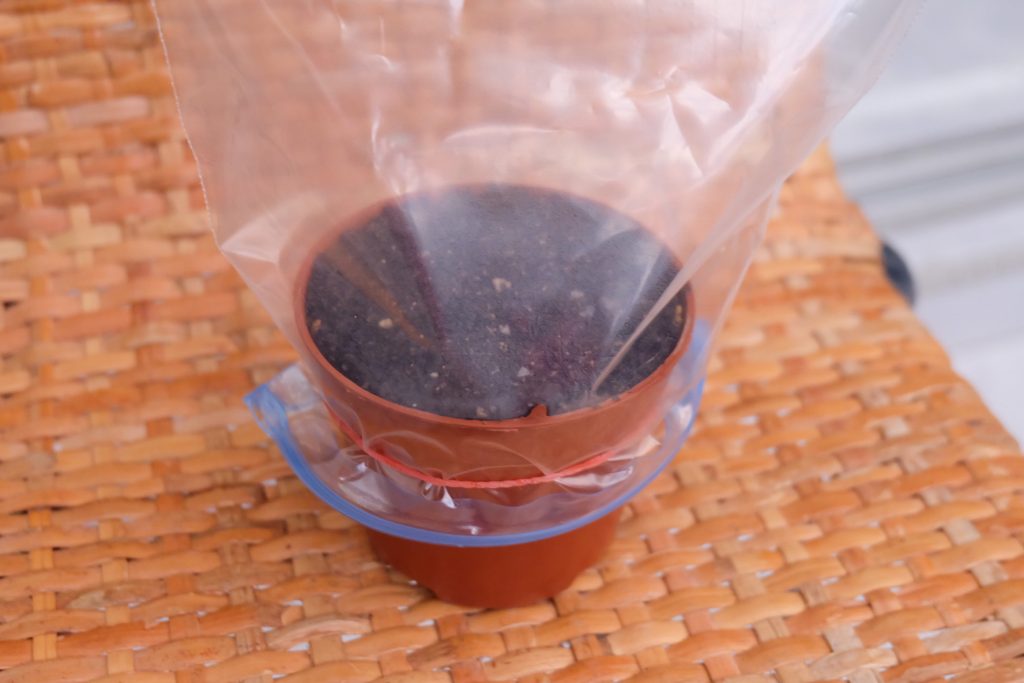
It is also recommended to cover the pot with ziplock bag in order to retain the moisture. I place the pot in a well-ventilated area that receives direct to partial sunlight (at least 5 hours a day). If the weather gets too hot, I would use a stand fan to help with air circulation. I don’t expect my Lithops seeds to germinate all at the same time so below are actual snaps of their growth developments…
DAY 4 (July 2 Update)
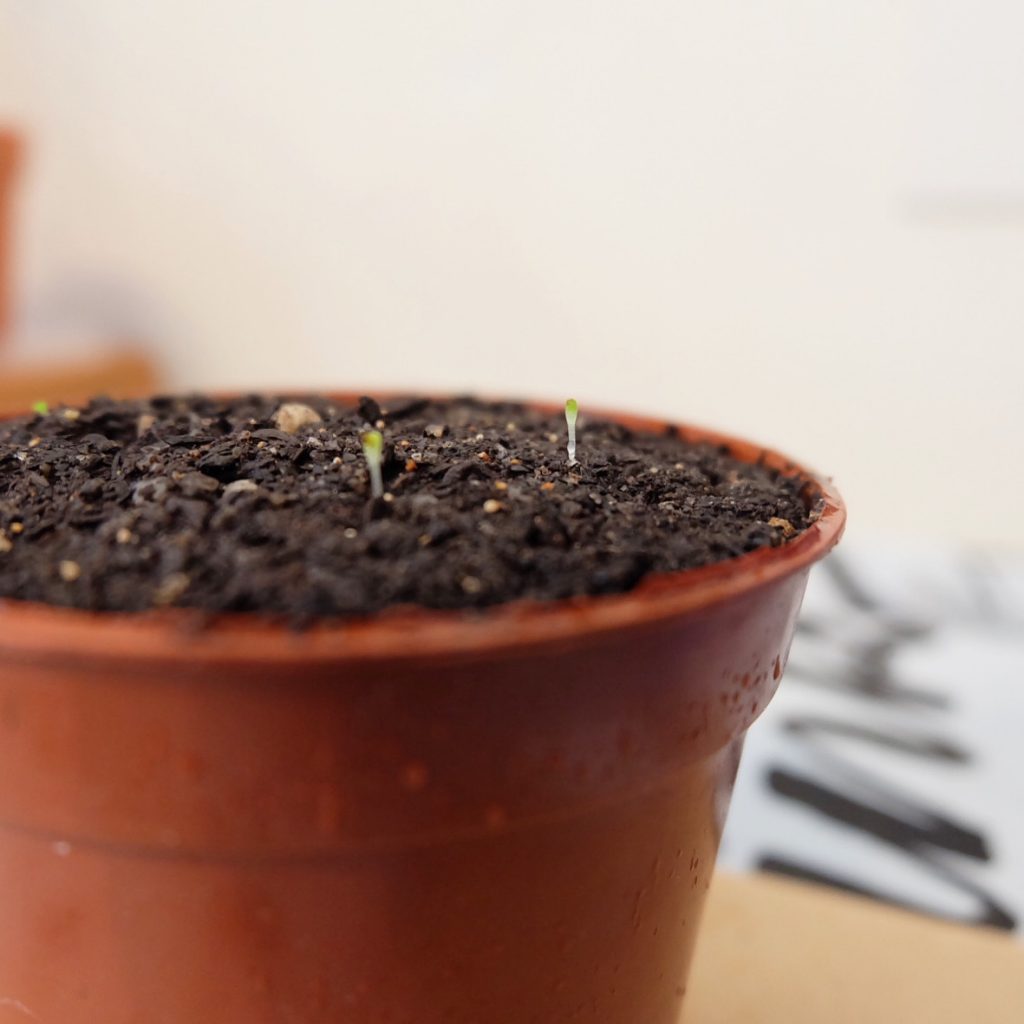
On day 2, I am seeing 3 seeds germinating and making a subtle entrance.
DAY 7 Update
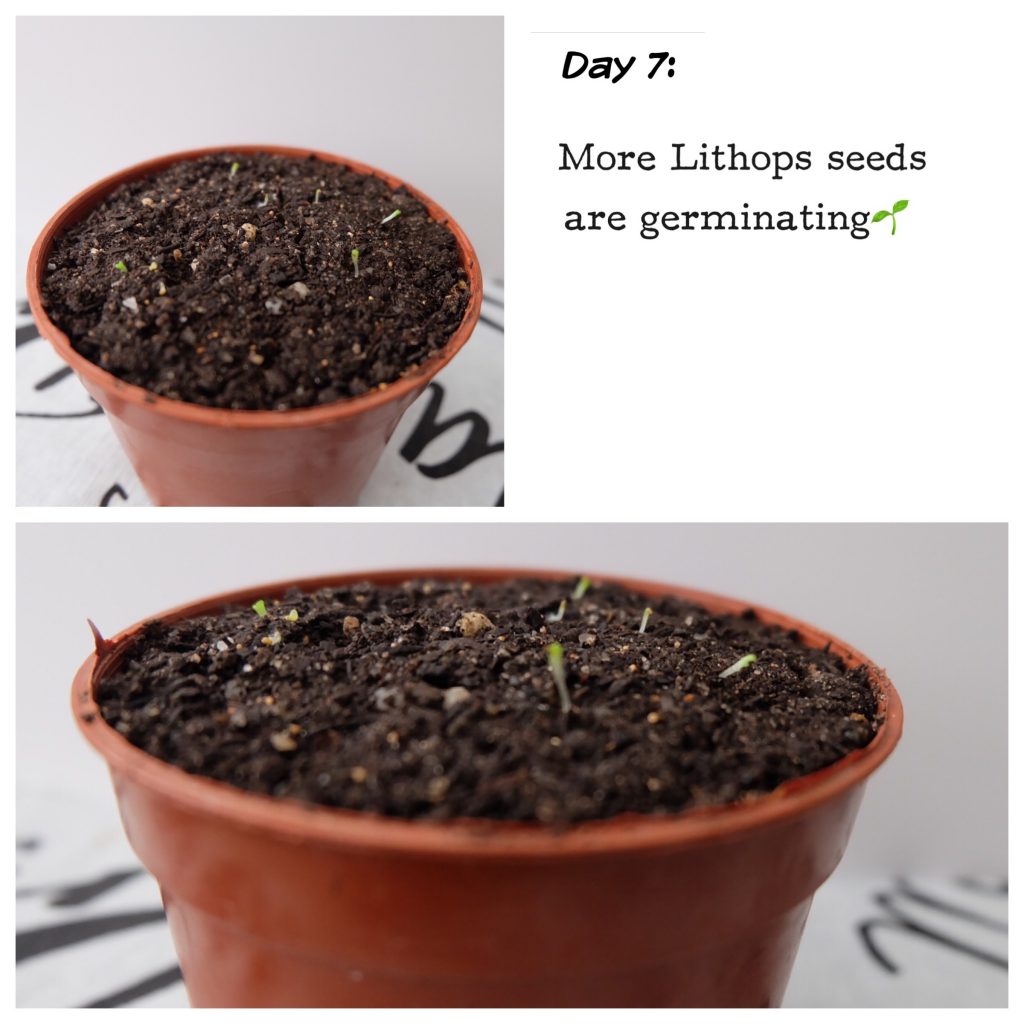
I will continue to update this post as the seeds successfully grow (cross-fingers) into mature Lithops. I hope my experiences as a novice collector inspire you to not give up on your Lithops after losing some or all of them in your first attempt to collect. I wish we can raise lots of Lithops here in Asia not only because of their endearing attributes but more importantly because they are rare.
If you wish to follow my journey on collecting and growing succulents, you can give my account a follow at Instagram @POSSIBLYPLANTS







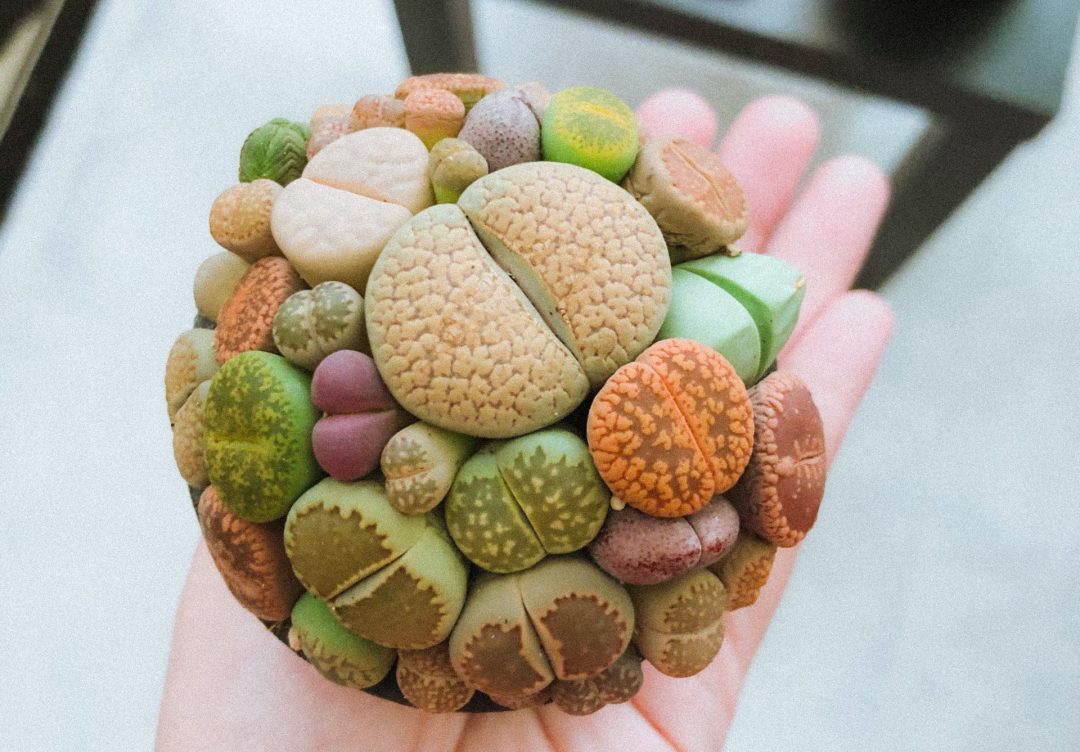
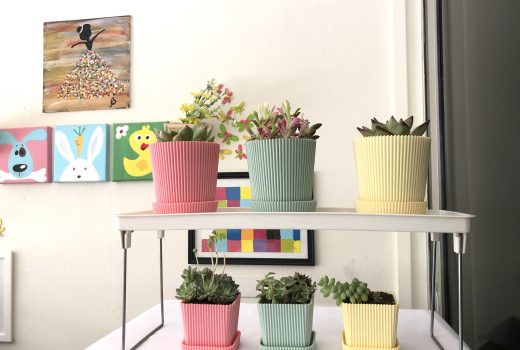
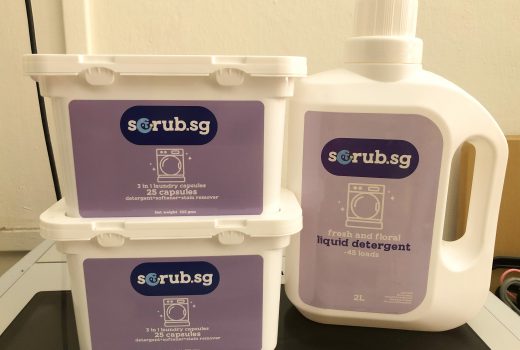

12 Comments
Oh my!!! I am so getting them lithops. Those are so cute. Teach us how to grow them pls
July 4, 2020 at 2:55 pmHi Ate, can I buy from your store? I followed @possiblyplants po
August 22, 2020 at 1:40 pmFollowing you, thanks for inspiring me!
September 18, 2020 at 11:45 pmHello, just wanted to ask some help for lithops. How daily do you spray some water on your lithops while germinating period. I have planted some 10pcs of lithops on a pummice soil(wet soil). It’s been a week but NO lithops have sprouted 🙁 I’ve already seal it with a clingwrap. Please need some advice po.
October 20, 2020 at 8:29 pmHi Dario,
Pure pumice ba lahat? For mine, I use regular soil as topmost layer as the seeds will have tendency to fall through the cracks.
December 18, 2020 at 7:58 pmYou can refer to my soil medium in this post : )
Hi, it is so difficult to get genuine lithops seeds. Have try a few seller from lazada and shopper. Seem like all are fake seeds. Kindly help to advice where can I purchase them. He. He.. thanks.
April 6, 2021 at 3:54 pmHi Jason,
I can share you the seller I got my lithops from. Just send me a DM via IG @possiblyplants
April 6, 2021 at 6:22 pmHello! May I know where did you get the pots? Thanks!
February 11, 2021 at 10:57 pmHi ! I’d love to hear more about how your lithops seedlings grew!
February 18, 2021 at 2:04 pmHi! I realize I use the wrong soil for lithops seeds. They germinate but not all and the problem is their roots is not growing downward.. I can see the root on top of the soil some root even facing upwards… What should I do to safe them from dying? They are still very very tinny…
July 16, 2021 at 4:07 pmHello! Just checking in to say I love this post and it is especially helpful cuz you mentioned growing lithops in Singapore as well! I am also a lithops and conophytum lover, they are just too cute! It is quite hard to find guides for growing lithops in Singapore cuz most of them stated the 4 seasons.. Can I just ask if the lithops dormancy state also applies to Singapore? Thank you!!
October 24, 2021 at 6:48 amHi Melissa,
I also have conophytum and it producing baby. I dare not water it. I heard Lithops and Conophytum have different watering cycle.
Your questions also my enquiry about Lithops cycle in SG seasons. Hehe … but according to Breachelle post, she water Lithops once every 2 weeks or when she see the skin wrinkle.
May 17, 2022 at 11:03 pm